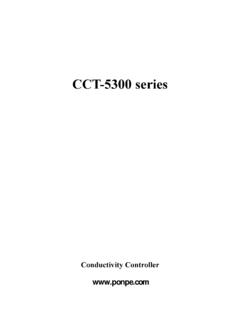Transcription of AC 150/5300-18B, General Guidance and Specifications for ...
1 Department of Transportation federal aviation administration Advisory Circular Subject: General Guidance AND Specifications FOR SUBMISSION OF AERONAUTICAL SURVEYS TO NGS: FIELD DATA COLLECTION AND GEOGRAPHIC INFORMATION SYSTEM (GIS) STANDARDS Date: 05/21/2009 Initiated by: AAS-100 AC No: 150/5300-18B 1. PURPOSE: This Advisory Circular (AC) provides the Specifications for the collection of airport data through field and office methodologies in support of the federal aviation administration (FAA). It also explains how to submit data to the FAA, who will forward the safety critical data to the National Geodetic Survey (NGS) for independent verification and validation. The primary purpose of these General guidelines and Specifications is to list the requirements for data collection conducted at airports in support of the FAA Airport Surveying Geographic Information System (GIS) Program.
2 The FAA s Office of Airport Safety and Standards (AAS-1) administers this program. The standards covered in this document provide critical information for the operation and safety of the National Airspace System (NAS) and are classified as critical by the International Civil aviation Organization (ICAO). ICAO Annex 15 defines data as critical when there is a high probability when using corrupted critical data that the continued safe flight and landing of an aircraft would be severely at risk with the potential for catastrophe. The information furnished under these standards covers the entire spectrum of the FAA s airport data requirements, including but not limited to runway and stopway data, navigational aid data, obstruction data, and data on various airport features, including taxiways, aprons, and landmark features.
3 Most of this information is source data, acquired by field survey and/or remote sensing methods. 2. CANCELLATION: AC 150/5300-18A, General Guidance and Specifications for Submission of Aeronautical Surveys to NGS: Field Data Collection and Geographic Information System (GIS) Standards, dated 9/15/2007, is cancelled. 3. PRINCIPAL CHANGES. The substantial revision of this AC incorporates new standards addressing the collection of a greater spectrum of airport related data and is reformatted to provide better understanding. Users should review the entire document to familiarize themselves with the new format. 4. APPLICATION: The FAA recommends the guidelines and standards in this AC for the collection of geospatial airport and aeronautical data. In General , this AC is not mandatory. However, use of these guidelines is mandatory for the collection of geospatial airport and aeronautical data funded under federal grant assistance programs.
4 It also provides one, but not the only, acceptable means of meeting the requirements of Title 14 Code of federal Regulations (CFR) Part 139, Certification of Airports for the collection of geospatial airport and aeronautical data. Mandatory terms such as "shall" or "must" used herein apply only to those who purchase the collection of geospatial airport and aeronautical data using Airport Improvement Program (AIP) or Passenger Facility Charge Program (PFC) funds, or those who seek to demonstrate compliance by use of the specific method described by this AC. AC 150/5300-18B 05/21/2009 ii 5. COMMENTS OR SUGGESTIONS for improvements to this AC should be sent to: Manager, Airport Engineering Division federal aviation administration ATTN: AAS-100 800 Independence Avenue, Washington, DC 20591 6. COPIES OF THIS AC.
5 The Office of Airport Safety and Standards is in the process of making ACs available to the public through the Internet. Obtain these ACs through the FAA home page ( ). A printed copy of this and other ACs can be ordered from: Department of Transportation Subsequent Business Office Annmore East Business Center 3341 Q 75th Avenue Landover, MD, 20785. Michael J. O Donnell Director of Airport Safety and Standards 05/21/2009 AC 150/5300-18B iii TABLE OF CONTENTS CHAPTER 1. General Guidance AND Specifications .. 1 INTRODUCTION .. 1 administration .. 1 Specifications .. 1 Conventions .. 1 CONTRACTOR REQUIREMENTS .. 2 Maintenance and Calibration .. 2 Original Data .. 2 Corrections or Revisions to Data .. 3 Unusual Circumstances .. 3 Specification Review and Familiarity .. 3 NATIONAL SPATIAL REFERENCE SYSTEM (NSRS).. 3 Horizontal Control.
6 3 Vertical Reference .. 3 GEOID 3 DATA FORMATS .. 4 Ground Control Data .. 4 Digital Images from Hand-Held Camera .. 4 Documents or Sketches .. 6 Geospatial Vector Files .. 7 ESRI Nuances for Dealing with FAA Attribute Names .. 7 Airport Layout Plan Data .. 8 Raster Imagery .. 8 CHAPTER 2. SURVEY Specifications AND STANDARDS .. 11 OVERVIEW OF THE PROCESS .. 11 INDEPENDENT VERIFICATION AND VALIDATION OF AIRPORT SAFETY DATA.. 11 Verification .. 11 Validation .. 12 ACCURACY REQUIREMENTS .. 12 Geodetic Control .. 12 Imagery .. 12 Remotely Sensed Surveys .. 12 Feature Accuracy Requirements .. 13 Field Surveys .. 13 RESERVED .. 13 FEATURE ATTRIBUTION .. 13 REPORTING REQUIREMENTS .. 14 General Reporting Requirements .. 14 Survey and Quality Control Plan .. 14 Project Status Report .. 16 Final Project Report .. 16 Field Note Information and Data.
7 18 Deliverables Checklist .. 18 Pre-Survey Preparation Activities .. 19 Field Survey Operations .. 20 Determining the Survey Requirements.. 21 Types of Airport Survey Projects .. 25 AIRPORT AIRSPACE ANALYSIS SURVEYS .. 36 AC 150/5300-18B 05/21/2009 iv Airport Airspace Survey Surfaces and Analysis .. 36 ONE ENGINE INOPERATIVE (OEI) ANALYSIS SURVEY REQUIREMENTS .. 51 TOPOGRAPHIC SURVEYING .. 52 Category II and III Operation Area Topographic Survey.. 54 AIRPORT MAPPING DATABASE SURVEYS .. 56 ENGINEERING (CONSTRUCTION) SURVEYS .. 59 AIRPORT PAVEMENTS .. 60 Construction/Roughness .. 60 Airport Pavement Inventory .. 60 SUB-SURFACE UTILITIES ENGINEERING (SUE) .. 61 Utility Research .. 62 Utility Designation .. 63 Utility Field Collection .. 64 Optional SUE Quality Level A Testholes .. 64 BOUNDARY SURVEYING/LAND USE .. 64 Research and Investigation.
8 65 Monumentation.. 65 Measurement Specifications .. 66 Plat of survey.. 66 CHAPTER 3. GEOSPATIAL Specifications AND STANDARDS .. 69 INTEGRATING GIS AND ENGINEERING DATA .. 69 ADVANTAGES OF DATA COMPLIANCE .. 69 RELATIONSHIP OF GIS FEATURES TO CADD LAYERS .. 69 Layering of Feature Types .. 69 Feature Type Layering in GIS Software .. 70 Relationship of GIS and CADD 70 Feature Type Layering in CADD Software .. 71 GEOMETRIC REQUIREMENTS .. 73 Feature Types .. 73 Geometry .. 73 Topological Integrity .. 74 77 Domain Values .. 78 Primary Key Identifiers .. 78 Foreign Key Identifiers .. 78 79 Temporal Relevance .. 81 Accuracy .. 81 Security Sensitivity Levels .. 81 COORDINATE SYSTEMS .. 82 Acceptable Coordinate Systems .. 82 Acceptable 82 CHAPTER 4. DATA TRANSLATION AND USE OF EXISTING DATA .. 83 USE OF EXISTING DATA .. 83 Maintenance of Data.
9 83 Data Set Maintenance and Update .. 83 Establishing a Common Data Reference Framework .. 87 Data Distortion Handling 89 Legacy Data Elements Standards Compliance .. 90 05/21/2009 AC 150/5300-18B v PREPARING YOUR DATA FOR SUBMISSION TO THE FAA .. 90 DATA MIGRATION TOOL (DMT) .. 91 External-reference and Nest all Legacy Drawings for Autodesk DWG format only .. 93 Bind all Legacy Drawings .. 93 Run Data Migration Tool (DMT) .. 94 Identify and Translate Non-Compliant Objects .. 98 Layer Conversion from Legacy to FAA Standards .. 100 Assign Attributes to FAA Compliant Objects .. 103 Run Final Purge Routine on Compliant Database and Save .. 105 CHAPTER 5. AIRPORT DATA FEATURES .. 107 FEATURE DOCUMENTATION MINIMUMS .. 107 MULTIPLE INSTANCES OF FEATURES .. 107 FEATURE CLASS DESCRIPTION LEGEND .. 107 Paragraph Number and FeatureClassName .. 107 GROUP: AIRFIELD.
10 108 Aircraft Gate Stand .. 108 Aircraft Non Movement Area .. 110 Air Operations Area .. 111 Airfield Light .. 112 ArrestingGear .. 114 Frequency Area .. 115 Passenger Loading Bridge .. 116 Runway Centerline .. 117 Runway Helipad Design Surface .. 118 Runway Intersection .. 119 Runway LAHSO .. 121 Runway Element .. 122 Stopway .. 124 Taxiway Holding Position .. 125 Airport Sign .. 127 Apron .. 128 Deicing Area .. 130 Touch Down Lift Off .. 131 Marking Area .. 133 Marking Line .. 134 Movement Area .. 136 Runway .. 137 Restricted Access Boundary .. 138 Runway Arresting Area .. 140 Runway Blast Pad .. 142 Runway End .. 143 Runway Label .. 150 Runway Safety Area Boundary .. 151 Shoulder .. 152 Taxiway Intersection .. 155 Taxiway Element .. 156 GROUP: AIRSPACE .. 159 Landmark Segment .. 159 Obstacle .. 160 AC 150/5300-18B 05/21/2009 vi Obstruction Area.














